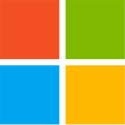Wednesday, August 21st 2024

Microsoft Updates the 30-year-old FAT32 File-system with 2TB Volume Size Limits
With the latest Insider update to Windows 11, Microsoft refreshed its 30-year-old FAT32 file-system with support for a maximum volume size of 2 TB. The file-system was limited to 32 GB until now. This update, however, does not change the maximum file-size limit of 4 GB. The move is probably aimed at making life easy for enterprises using the file-system for whatever reason, or for high capacity removable media to have better cross-platform support (eg: to video equipment). If you mainly move files within a Windows ecosystem, it's highly recommended that you stick to NTFS as it offers security features and support for larger files, which FAT32 doesn't.
Source:
Notebook Check

61 Comments on Microsoft Updates the 30-year-old FAT32 File-system with 2TB Volume Size Limits
www.paragon-software.com/exfat-license
Except for NTFS on Windows NT, I never heard of FAT32 before that! Fun fact: The retail Windows 95 never got the update that the OEMs got! A bunch, had to use FAT16! That means 2 GB partitions. (or similar)
So 30 years ago, nearly everyone used FAT16.
Fun fact: Windows 98 didn't have a 32 GB limit for FAT32. Also Windows XP can read them. It's just that there was a limit for partition sizes added to the XP installer. Possibly with all of NT5 as well.
So if you wanted FAT32 for one partition on that brand new 80 GB HDD back in 2002 for Windows 98 SE (or NT5 for an 80 GB backup drive)->format it in MS-DOS.
(The MS-DOS environment that comes with Windows 98 or Windows 95 OSR2)Fun fact: VFAT was mostly rolled out, starting with Windows 95 and all versions of RTM Windows 95 has it. It's literally for having long file names on FAT16.
We have exFAT...
Makes me want to have AMI and Phoenix consider the Ext FS from Linux or the F2FS (IIRC) (Samsung open sourced it, I believe)
The FAT32 FS is known for the file-size-limit gotcha! No more than 3.9 GiB, IIRC.
Royalties will only apply to devices like cameras and phones where the software is needed. And guess what? Most of those use Linux where the royalties have been wavered. So ExFAT is practically free.
It will be like GIF 20 years ago.
100MB first or second partition of your C drive.
just bc macroshit keeps using it doesnt mean it's not obsolete